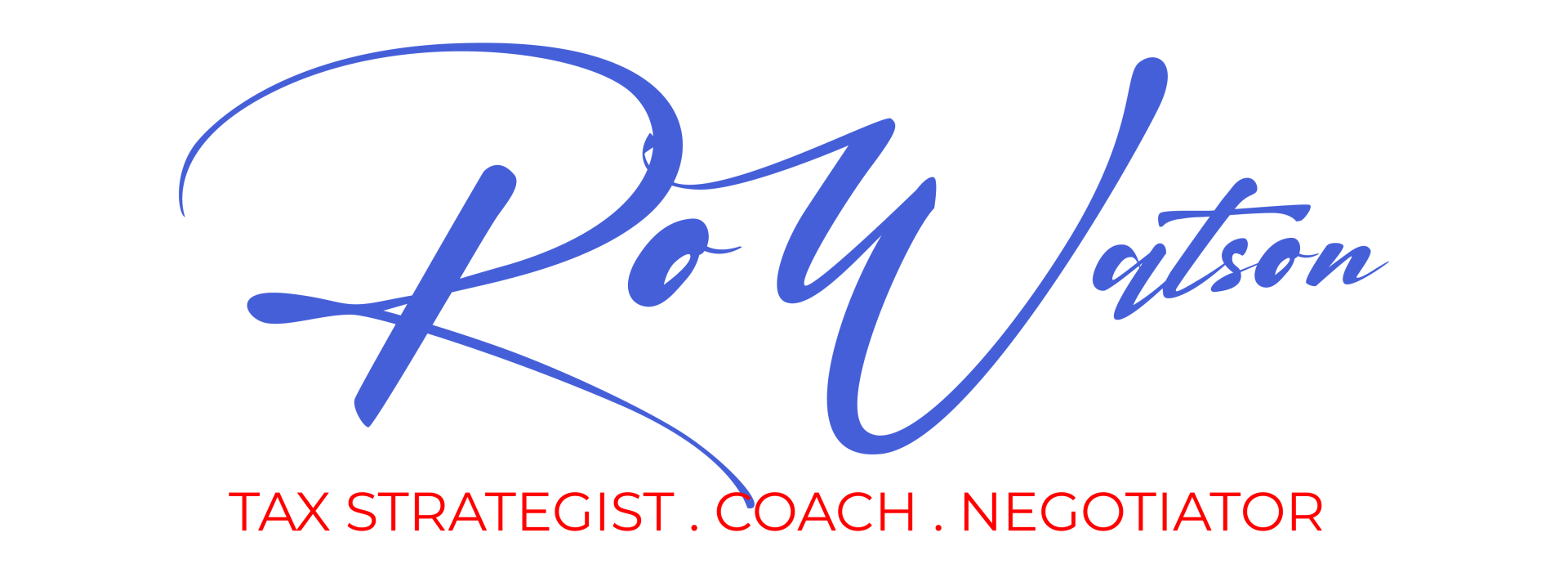Latest Blog Addition

The IRS recently reminded taxpayers that home testing for COVID-19 (coronavirus) is a qualified medical expense for various medical spending and savings accounts. The cost of home testing may be paid or reimbursed with tax-protected funds from an eligible account. Specifically, you may use a health flexible spending arrangement (FSA), health savings account (HSA) or certain other cafeteria plans to pay or receive reimbursement for testing expenses. Other COVID-related eligible medical expenses include the cost of personal protective equipment (PPE) like masks, hand sanitizer and sanitizing wipes. The equipment must be used primarily to prevent or reduce the spread of coronavirus in order to qualify for FSA, HSA or other medical cafeteria plan reimbursement. You can maximize the tax benefits of your FSA or HSA by making expenditures or accepting reimbursements at well-chosen times. A tax advisor can help you formulate the best strategy for using your account.

The CARES Act of 2020 included provisions to make it easier for taxpayers to donate to charities. Congress and the IRS have extended these temporary rules through tax year 2021. One key rule raises the deduction limit for charitable contributions, while another allows taxpayers to deduct certain donations even if they don’t itemize deductions on their tax returns. Standard IRS rules limit the deduction that taxpayers who itemize deductions can claim for charitable donations to at most 60% of adjusted gross income (AGI). However, under the extended special rules, these taxpayers may elect to claim a deduction of up to 100% of their AGI for qualified monetary donations made during calendar year 2021. Taxpayers who claim the standard deduction ordinarily cannot deduct any charitable donations on their tax returns. However, the special rules allow these taxpayers to claim a deduction of up to $300 (up to $600 for joint filers) for qualified monetary contributions made to charities in 2021. You may claim this deduction in addition to the standard deduction for your filing status. Only monetary contributions qualify for these special tax benefits. Monetary contributions include donations to qualifying charities made by cash, check, digital payment or credit card, as well as by paying unreimbursed expenses while doing volunteer work. Donations of goods, property (including virtual currency) or labor do not qualify for these temporary deduction rules. The extended special rules are set to expire at the end of 2021. A tax professional can help you plan your charitable giving for the rest of the year to take advantage of the available tax benefits. The IRS search tool for nonprofit organizations (link below) can help you find eligible charities that accept qualifying monetary contributions. IRS Nonprofit Search: https://www.irs.gov/charities-non-profits/search-for-tax-exempt-organizations

Both major life events and small changes to your work or family routines can have an impact on your taxes. These events and changes often occur during the summer, especially this summer with the economy reopening. If your life circumstances take either a planned or unexpected turn this summer, you may want to take a few extra steps to prepare for tax season next spring. If you get married, you should report any name or address change to the Social Security Administration, IRS and post office to ensure that you receive important tax documents. If your child returns to in-person day camps or daytime education programs, some of the cost may qualify for the Child and Dependent Care Credit. Make sure to save records of all fees paid. Seasonal and part-time work create a variety of record keeping and tax reporting challenges. If you are a student and do not earn enough money to owe federal income tax, you may need to file a 2021 tax return to claim a refund of any tax withheld from your pay. Those who earn side income from a part-time job or gig economy work may need to adjust their paycheck withholding for their primary job to make sure enough tax is withheld. You can use the IRS Withholding Estimator tool to check where you stand. Also keep in mind that income earned as a freelancer or independent contractor may be subject to self-employment tax. Figuring out whether you are officially an employee or an independent contractor can get tricky for temporary work. A tax professional can help you determine your status, and plan for self-employment tax if appropriate.

Millions of U.S. households received their first advance payments of the 2021 Child Tax Credit (CTC) in July. While these payments will help many families, some taxpayers may come out better by unenrolling from the advance payment program. If the advance payments add up to more than your total credit for 2021, you may end up owing tax for the year. In most cases, the IRS bases CTC advance payments on the taxpayer’s 2020 federal tax return, or their 2019 return if their 2020 return has not been processed. Certain life changes during 2021 could reduce your CTC amount, or even make you ineligible for the credit. Therefore, you may wish to consider opting out of advance payments if any of the following occur: A qualifying child who lived with you in 2020 (or 2019) will not live with you for more than half of 2021. Your income increases significantly in 2021. Your filing status changes in 2021. You previously met the CTC residency requirement, but will not live in a U.S. state or D.C. for more than half of 2021. In this case, unenrollment may be required. You can also choose to unenroll from advance payments simply because you want to receive your entire 2021 CTC when you file your tax return in the spring. To unenroll for any reason, use the IRS Advance CTC Update tool (link below). A tax professional can help you determine whether receiving advance payments or opting out makes more sense for your circumstances. Note that for married couples filing jointly, both spouses must unenroll from advance payments. If only one spouse opts out, the other will still receive monthly advance payments equal to half of the original payment amount calculated for the household. IRS Advance CTC Portal to unenroll: https://www.irs.gov/credits-deductions/child-tax-credit-update-portal

A special tax rule enables many businesses, including sole proprietors and independent contractors, to take larger meal expense deductions in 2021 than the IRS usually allows. Ordinarily, deductions for food and beverage costs cannot exceed 50% of the actual expense. However, the 2021 rule enables businesses to deduct 100% of the cost of food and beverages from restaurants in certain cases from January 1, 2021 through December 31, 2022. The provision defines a restaurant as a business that prepares food or beverages for retail customers to consume on-site, pick up, or receive by delivery. This definition excludes most grocery and convenience stores, unless the store contains a separate restaurant or cafe area. In addition, facilities overseen or owned by the employer claiming the deduction, such as a workplace cafeteria, generally do not qualify as restaurants under this rule. In order for meal expenses to qualify for this special deduction, the following conditions must be met: The business owner or an authorized employee is present when the food and/or beverages are provided. The expense is paid to a restaurant, based on the definition above. The food and beverage costs are not lavish or extravagant for the circumstances. The activity must also meet all the standard criteria for business meal deductions. Your tax professional can help you determine whether your food and beverage expenses comply with IRS rules, and whether they qualify for a 100% deduction in 2021.

The IRS recently updated its list of the 12 worst tax-related scams in America, known as the Dirty Dozen. Several current Dirty Dozen cases involve social media phishing, where scammers use social platforms to impersonate someone that a taxpayer knows and trusts. For example, a scammer might “lurk” on a user’s account, gathering personal information about the user from posts and public chats. The scammer then sends messages to the user that appear to come from a friend, family member or coworker. The messages may have links to websites related to the user’s interests. However, clicking on the links triggers a download of spyware (software that the scammer uses to steal more private information) or ransomware. Alternatively, the scammer may hack into a social media user’s email or phone, then send fake messages to the user’s friends and family. These messages may trigger malware downloads, or ask for donations to fake charities. All of these phishing methods can ultimately lead to tax-related identity theft. The IRS advises everyone to check the privacy settings on their social media accounts, and limit what they share publicly to prevent lurkers from mining personal data. If you receive an email or message from someone you know with a link or file, confirm that they sent it with a phone call or message them back. The IRS also reminds Americans of the ongoing threat of phone scams involving IRS impersonation. Scammers may claim to be calling about a federal tax lien, or may threaten people with arrest for supposed tax issues. Remember that the IRS rarely initiates contact with taxpayers by phone, and NEVER demands payment via prepaid debit card, money order, wire transfer or gift card. If you ever doubt the legitimacy of an IRS phone call, do not provide any personal information. Hang up, then call the IRS directly at 1-800-829-1040 to ask about the call you received, along with any supposed issues raised by the potential scammer.

If you’re starting a summer job or know a teen or student who is, here is a useful tax-saving tip: Students and teenage employees normally have taxes withheld from their paychecks by their employer after filling out a Form W-4. However, if the job is regarded as self-employment, like baby-sitting or lawn care can be, they should keep good records of all expenses to help maximize potential deductions. In the case of lawn care, potential deductible expenses may include business cards, fliers, fuel, equipment rentals, chemicals, work mileage, etc. Your tax professional can help advise on potential deductible expenses.

The IRS recently launched three new online tools (links below) to help eligible Americans claim and manage their advance payments of the 2021 Child Tax Credit (CTC). In addition to increasing the maximum CTC amount and raising the age limit for qualifying children, the American Rescue Plan authorized the IRS to send monthly advance payments of the 2021 credit to millions of eligible families beginning in mid-July. The Child Tax Credit Eligibility Assistant helps families find out whether they qualify for the 2021 CTC. You do not need to set up an IRS online account in order to use this tool. Just answer 2-5 questions about whether you claimed the CTC in 2019 or 2020, where you live, and, in some cases, your tax filing status, family size and income. If the tool determines that you may qualify for the credit, you can follow the MANAGE YOUR ADVANCE PAYMENTS link to make sure you are enrolled to get monthly payments by check or direct deposit beginning in July. The Child Tax Credit Update Portal provides additional information on eligibility for the 2021 CTC. However, in order to use it, you must either have an IRS online account, or go through an identity verification process. Once you determine that you are eligible, you can use this tool to: Unenroll from the program (for example, if you qualified for the CTC in 2019 or 2020 but do not expect to qualify in 2021 due to a family status or income change) Opt out of receiving advance payments, and instead receive your 2021 credit as a lump sum when you file your tax return Update your mailing address, family size, banking information for direct deposit, etc. Most eligible families do not need to take any action, and will automatically receive monthly advance payments of the 2021 CTC from July through December. However, if you qualify for the credit but did not file a 2019 or 2020 tax return, you may need to register for this program using the Non-Filers Signup Tool. If you qualified for the CTC in past years but did not claim it, your tax professional can help you file an amended return and perhaps receive an IRS refund for the credit. CTC Eligibility Assistant: https://www.irs.gov/credits-deductions/advance-child-tax-credit-eligibility-assistant CTC Update Portal: https://www.irs.gov/credits-deductions/child-tax-credit-update-portal Non-Filers Signup Tool: https://www.irs.gov/credits-deductions/child-tax-credit-non-filer-sign-up-tool

The recently enacted American Rescue Plan Act (ARPA) may help reduce health insurance costs for millions of Americans in 2021. The law expands the Premium Tax Credit from the Affordable Care Act, which can reduce the cost of insurance premiums. Some taxpayers who did not previously qualify for the credit are now eligible, while many current recipients will see an increase in their credit amount this year. In order to claim the Premium Tax Credit, you must purchase health insurance through the ACA Insurance Marketplace, sometimes called the Exchange. You can access the Marketplace by visiting healthcare.gov. The new rules will enable many Americans to improve their health insurance plan, lower their premiums or both. To give people time to explore options, the 2021 ACA Special Enrollment Period (SEP) has been extended through August 15. Ordinarily, the SEP is only available for people who experience a qualifying life event (such as a job change) or do not currently have insurance. However, the extended 2021 SEP also allows those who are already insured through the Marketplace to explore new coverage options. The U.S. Department of Health and Human Services estimates that about one in four current ACA enrollees will benefit from shopping for a new plan. They may be able to get more comprehensive coverage for the same premiums they currently pay, or pay significantly lower premiums for their current level of coverage. A professional tax advisor can help you determine whether you qualify for the Premium Tax Credit. If so, comparing insurance plans during the 2021 SEP could bring you substantial savings, or the peace of mind offered by more complete coverage.




